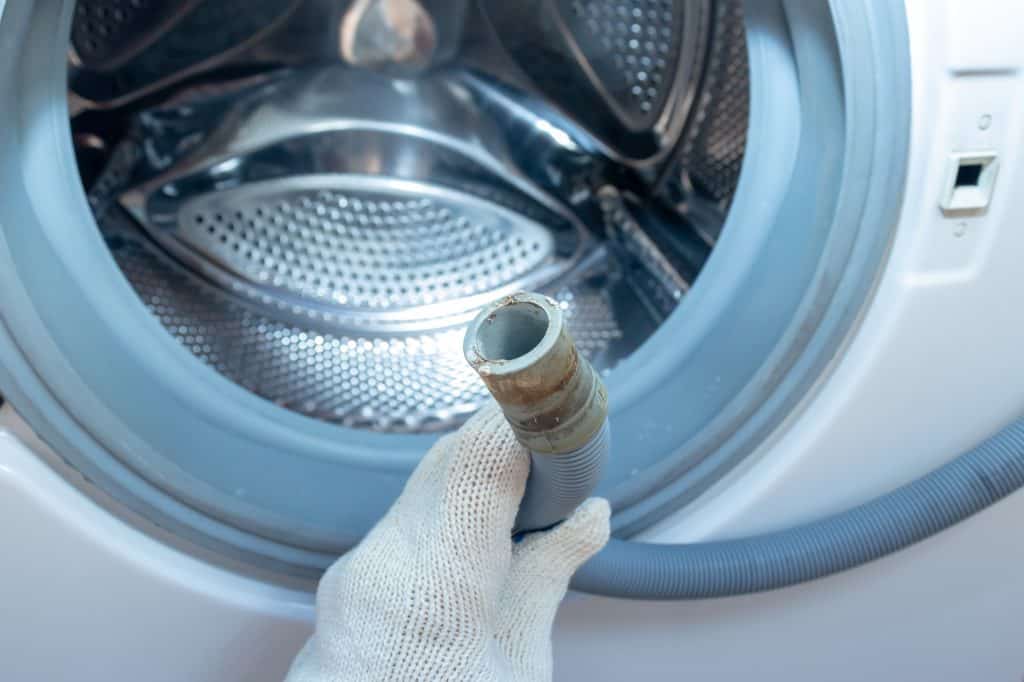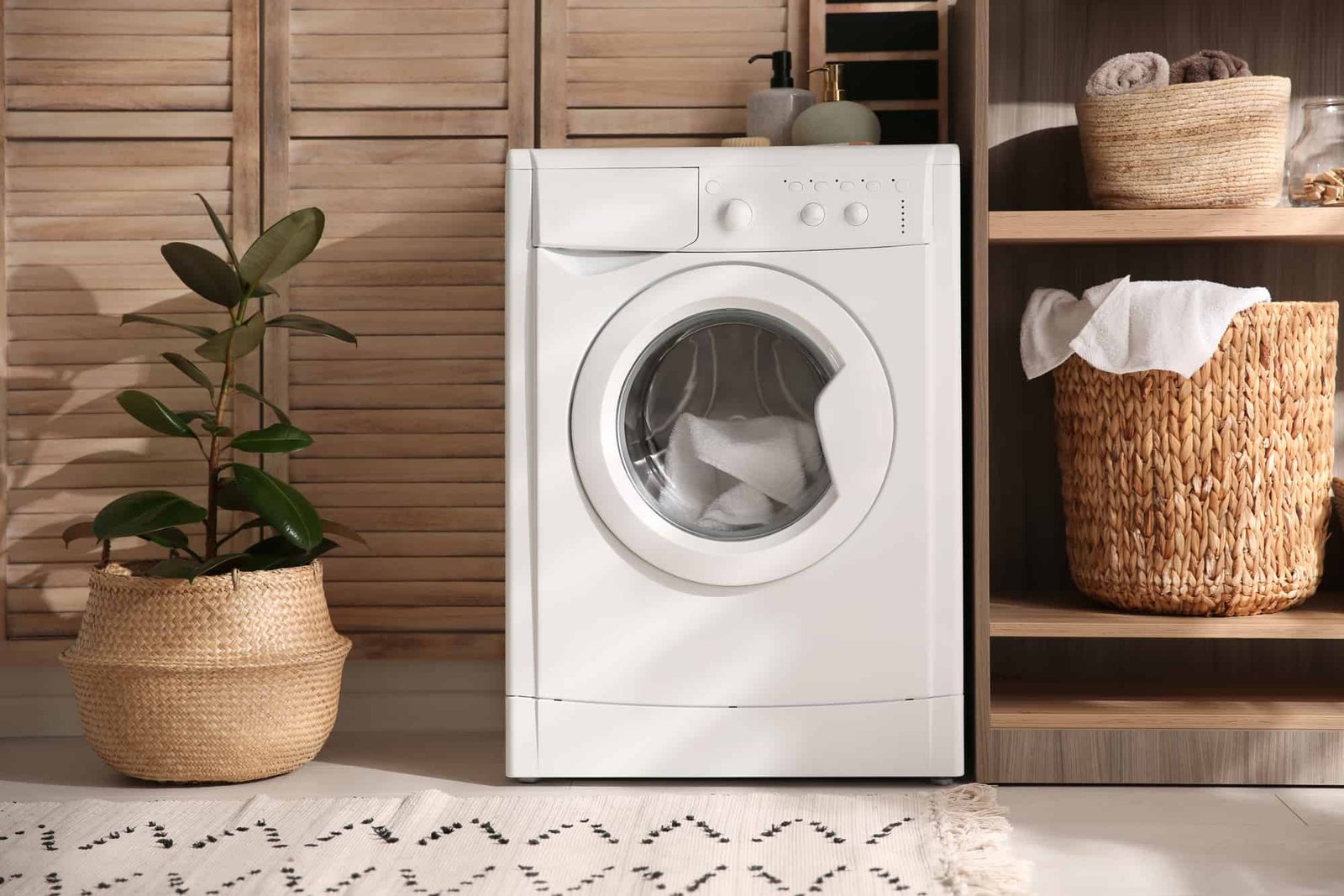If you’ve just moved into a new house and need to install your washing machine, you’re probably looking for the perfect location — specifically, one where the drain will fit. So, how far away can you fit a washing machine drain?
You can fit a washing machine drain up to a maximum distance of 2.7 m (9 ft) from your appliance. Washing machines come with standard 1.5 m (4.9 ft) hoses, but you can safely extend them with pipes that are a maximum of 1.2 m (4 ft) long.
In this article, I’ll explain whether a washing machine drain can be too long and if you can fit an extension hose into an existing unit.
Can a Washing Machine Drain Be Too Long?
You’ve just renovated your laundry room and found a convenient place for your washing machine, but it’s a little far from the outlet pipe. So can a washing machine drain be too long? Or is that a non-issue as far as your appliance is concerned?
A washing machine drain can be too long, and it is best to use the drainage pipe that comes with your appliance. Drainage pipes that are too long can cause water accumulation, backflow into the washing machine, pipe kinking, and breaking.
When buying a washing machine, you’ll notice that the drainage hose’s standard length is 1.5 m (4.9 ft). Drainage pipes also generally have a diameter of 40 mm (1.5 in) (source: Samsung).
These measurements ensure that when draining, wastewater doesn’t flow back into your washing machine, and the pipe doesn’t overflow.
Your washing machine also features a drain standpipe or a vertical hose with an elbow. The elbow section always contains water so it can prevent sewer gasses from entering.
It also maintains your washing machine’s water level below the drain so wastewater from the sewer can’t enter it (source: SFGATE).

Most washing machine manuals state that your drainage hose must enter the standpipe at a minimum height of 99 cm (39 in) and a maximum height of 244 cm (96 in). The higher the standpipe, the better it can prevent the backflow of wastewater.
However, if the standpipe is too high, your washing machine won’t be able to pump wastewater into it efficiently, and you’ll need to install a sump pump (source: How To Look At A House).
What Happens When a Washing Machine Drain is Too Long
If your washing machine’s drainage pipe is too long, it can cause certain problems.
First, it’ll suffer water accumulation.
When your washing machine discharges water, the water flows out of the drainage hose and into the sewer system. If the drainage hose is too long, your washing machine’s drain pump will need to work harder to force the water into your home’s drain outlet pipe.
Some water may accumulate in the pipe, resulting in bacterial and mold build-up. Washing machine wastewater can have dead skin cells, bodily secretions, and tiny food particles. Combined, these can create an unpleasant smell in your laundry room.
Second, you raise the chances of your drainage pipe kinking and breaking.
Washing machine drainage pipes that are too long can form loops, making them prone to kinking. This kinking can obstruct the flow of water out of the pipe, causing it to remain stagnant.
After a while, the kinking can form weak spots in the drainage pipe, and the drainage hose may develop holes. Since the drainage pipe is at the back of your washing machine, you might only notice the breakage when it starts leaking and floods your laundry room.
Finally, you may experience backflow into the washing machine.
The best way for washing machines to drain is through a pipe that allows the water to travel via the most direct route.
Long drainage hoses result in slower and more indirect drainage, and some of the water can flow back, resulting in your laundry not being washed properly.
Can You Fit an Extension Hose to an Existing Washing Machine?
Now that I’ve explained the optimal length for washing machine drains, what if yours is too short? Can you fit an extension hose to it?
You can fit an extension hose to an existing washing machine, but it should not be longer than 1.2 m (4 ft). Anything longer can cause insufficient drainage and backflow.
Washing machines come with standard-length drainage hoses, and if you want to use an extended hose, it’s a good idea to consult the user manual to see what it recommends. However, most brands won’t recommend extension hoses over 1.2 m (4 ft) (source: Miele and Whirlpool User Manual).
You can extend your washing machine drainage hose yourself, or you could ask a plumber plumbing questions to have them do it for you.

If you’re ready to fit a drain hose extension to your washing machine, here’s how to do it:
Buy a drainage pipe extension kit compatible with your washing machine. It’s worth consulting the user manual as it sometimes recommends suitable drainage hose extension kits. The kit should contain a drainage pipe, two jubilee clips, and an adaptor.
Move your washing machine away from its current position. That way, you can have easy access to the drainage pipe. Turn off your home’s water supply, and unplug it from the power outlet.
Place a towel or bucket underneath the drainage pipe to catch any water. Then, detach the drainage pipe from the wastewater outlet.
Attach the hose adaptor to the end of your current drainage pipe. Make sure that it’s secure and tight, as attaching it too loosely can water leaks.
Attach the two jubilee clips to the adaptor and the drainage hose. The jubilee clips should fit around the pipe tightly. You may need to make a few revolutions to ensure that it’s securely in place.
Attach the end of the extension hose to the wastewater outlet pipe. Before moving your machine back in place, test the new setup by doing laundry on the shortest cycle.
If the extended pipe doesn’t leak, you have successfully extended your washing machine’s drainage pipe.
Now that you know how far away you can fit your washing machine drain pipe, I hope this article helps you get the best use out of it!










